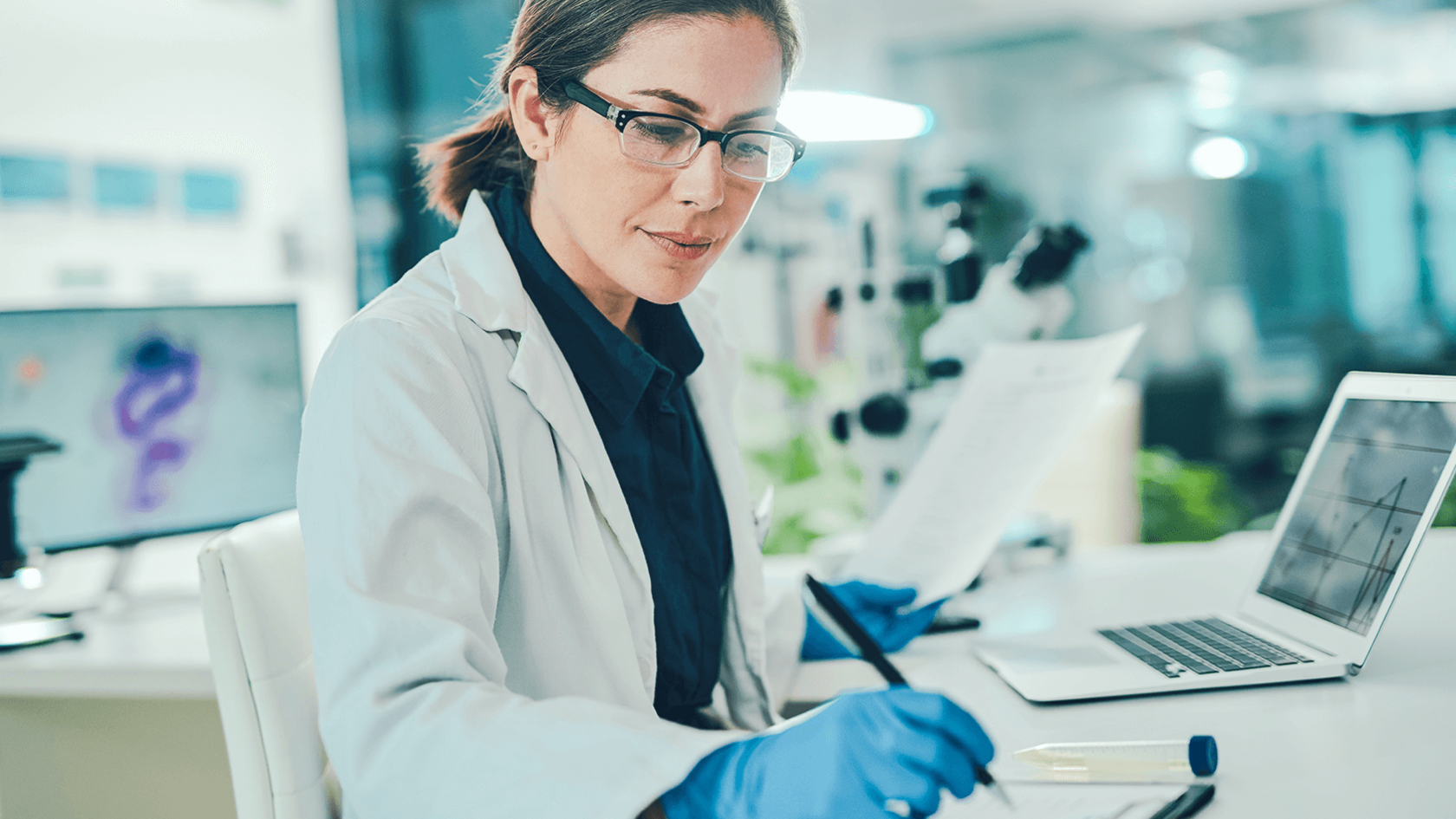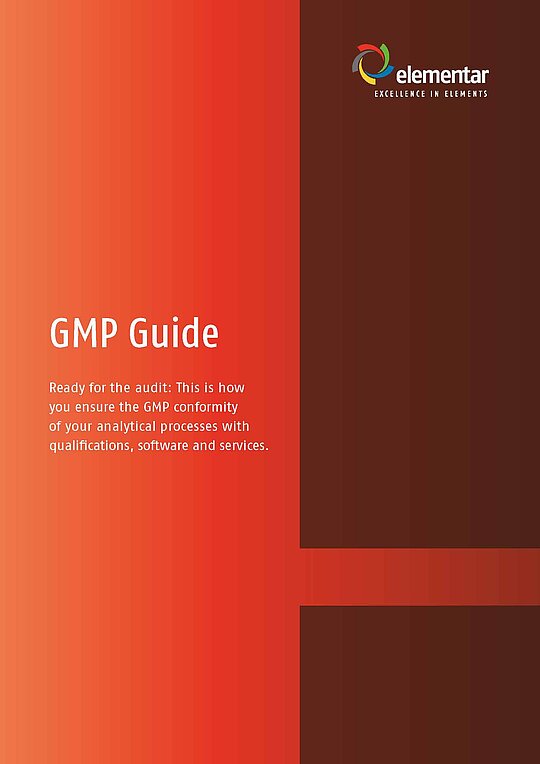Digitalization is key!

Laboratories need GMP-compliant software
In next-gen laboratories, digitalization and artificial intelligence will have a significant impact on the way good manufacturing practices (GMP) are implemented. Not only must actual production be GMP and GxP-compliant, but all software applications must also meet these standards – a crucial consideration for each manufacturer. The U.S. Food and Drug Administration (FDA) regulations and requirements on electronic records and signatures are particularly important in this context.
What software requirements are associated with GMP?
With 21 CFR Part 11 of its Code of Federal Regulations (CFR), the FDA aims to facilitate the transition from paper-based to electronic information. In many laboratories around the world, routine operations still rely on manual processes and paper-based documents. However, this is unlikely to remain feasible in the long term. 21 CFR Part 11 applies whenever information, such as measurement data, text files, images, videos or audio files, is electronically generated, modified, stored, transmitted or accessed. The requirements mainly concern documents used to demonstrate compliance with regulatory provisions, including, for example, release and test reports, work instructions and procedures, software architecture documentation, specifications, or review records.
One of the core requirements of 21 CFR Part 11 is the use of electronic signatures. Part 11 also stipulates the creation of audit trails for electronic records. These audit trails serve as a chronological record of system activities, i.e., as a highly comprehensive digital log, enabling traceability and accountability. Another aspect is that companies are required to validate their electronic systems to verify that they comply with the requirements of Part 11. This involves comprehensive testing and documentation to validate a system’s reliability and accuracy. Access controls are also essential to ensure that only authorized individuals can access electronic systems and records. This enhances data security and safeguards against unauthorized system changes.
The key requirements of 21 CFR Part 11 at a glance:
- Electronic records must be created, maintained and archived in such a way that safeguards their authenticity, integrity and confidentiality.
- Electronic signatures must be used in the same manner as handwritten signatures.
- Laboratories must have procedures in place to control access to electronic records and electronic signatures.
- Laboratories must have a system to verify electronic records and electronic signatures.

Digitalization in the lab: A game-changer, but with room for improvement
While the FDA is fully committed to digitalization with 21 CFR Part 11, it remains unclear how far laboratories have actually advanced in their digital transformation journey. It is safe to say that most laboratories still have a long way to go when it comes to digitalization – as demonstrated by the findings of a recent study by PTA IT Consulting and Statista. Just 12% of the testing laboratories surveyed reported that their laboratory facilities have undergone comprehensive digitalization in all areas (source: White paper – Digitalization in Testing Laboratories; PTA IT Consulting). Healthcare and forensic laboratories in particular are leading the way, with an impressive 82% of lab facilities in this sector being extensively digitalized.
A recent study by the Capgemini Research Instituteprovides valuable insights, highlighting the slow progress of digitalization in pharmaceutical laboratories. According to its findings, major players in the pharmaceutical sector are committed to investing 6.5% of their revenue in digital transformation initiatives for their laboratories by 2025. While most pharmaceutical laboratories are still in the early stages of their digital transformation journey, many recognize the need to rethink their laboratory infrastructure and processes and to integrate technological advancements more swiftly in the face of a fiercely competitive landscape. Interestingly, the study claims that companies that have invested in digital architectures and infrastructures are already reaping the benefits of their transformation initiatives in the form of shorter times-to-market, fewer errors and late-stage failures, and lower costs.
The rapid adoption of digitalization in the laboratory is therefore a sensible endeavor that offers a multitude of benefits. Harnessing AI, data analytics using activated data can aid in developing active pharmaceutical ingredients, evaluating study results and analyzing experimental results, among other things. This leads to time and cost savings in the development of new active pharmaceutical ingredients and enables faster time-to-market. Moreover, an open, collaborative, agile and digital laboratory culture unlocks benefits such as breaking down workplace silos, cross-collaboration on shared digital platforms, and redesigning laboratories to increase flexibility and efficiency.
GMP Guide: Ready for the audit
In this GMP guide, we collected information for you how to ensure GMP conformity of your analytical processes with qualifications, software and services. Furthermore, it contains application examples in the field of CHNOS analysis of different pharmaceutical samples, peptide content analysis, TOC analysis and cleaning validation as well as ADME studies in the product development phase. You will also find out how we can support you in the GMP-regulated environment with various services and worldwide contacts.

DOWNLOAD YOUR COPY
Fill in the form to receive your download link per e-mail.
Your contractual consideration for the free provision of the download is the subscription to our personalized newsletter. By clicking on the “download now” button, you therefore declare your acceptance of the receipt of personalized newsletters by e-mail by Elementar Analysensysteme GmbH and its group companiesas well as the evaluation of your user behavior in this regard and - if available - the merging of this data with your data in our customer database.
In order to receive newsletters from our group companies, it is necessary to transfer your above-mentioned personal data to these companies. We point out that these are partly located in so-called unsafe third countries outside the EU/EEA, in which no adequate level of data protection (e.g. by adequacy decision of the EU, Art. 45 GDPR) is guaranteed. In these countries, you may not be able to enforce your rights as a data subject, or only to a limited extent. In addition, it is possible that local government agencies access your data to a disproportionate extent. The data transfer is based on Art. 49 para. 1 lit. b) GDPR.
You are aware that the subscription to our personalized newsletter represents the contractual consideration that you provide for the free provision of the download. You can unsubscribe from the newsletter at any time with effect for the future. You can object to the future use of your data for advertising purposes at any time. For further information, please refer to our privacy policy.
Do not miss any new articles
NEWSLETTER
We will constantly publish new blog articles. Register for our newsletter to stay up-to-date and get informed about latest blog articles, news and trends.
